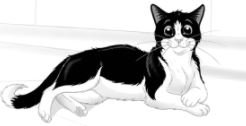Mal_Adjusted
Justified & Ancient
- Joined
- Aug 6, 2003
- Messages
- 2,246
Greets
http://canadaeast.com/apps/pbcs.dll/article?AID=/20050227/CPW/81333033
(hope they're not modern fakes!!!)
mal
Ancient earth drawings older than the country's Nazca lines, discovered in Peru
LIMA, Peru (AP) - Archeologists have discovered a group of figures scraped into the hills of Peru's southern coastal desert that are believed to predate the country's famous Nazca lines.
About 50 giant figures were etched into the earth over an area roughly 145 square kilometres near the city of Palpa, El Comercio newspaper reported.
The drawings - which include human figures as well as animals such as birds, monkeys, and felines - are believed to be created by members of the Paracas Culture sometime between 600 and 100 B.C. Johny Islas, the director of the Andean Institute of Archaeological Studies told the newspaper.
One prominent figure appears to represent the main deity of the Paracas Culture that is commonly depicted on textiles and ceramics that date from the period, Islas said.
The recently discovered designs predate the country's famous Nazca lines that cover a 56 kilometres stretch of desert that have mystified scientists and were added to the United Nation's Cultural Heritage list in 1994.
The Nazca culture flourished between 50 B.C. and 600 A.D., Islas said.
The lines - which also include pictographs of various animals - are one of Peru's top tourist attractions with about 80,000 tourists flying over the site every year.
http://canadaeast.com/apps/pbcs.dll/article?AID=/20050227/CPW/81333033
(hope they're not modern fakes!!!)
mal



